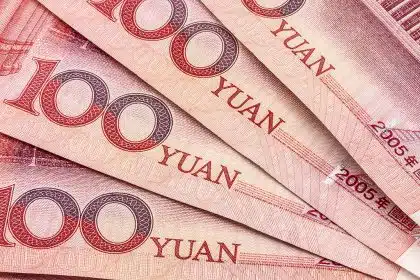The update on the digital yuan in circulation was revealed by the People’s Bank of China (PBoC) in the 2022 Financial Statistics Report.
For the first time, China included the digital yuan while calculating the amount of currency in circulation in December. This is significant to the country and the early adopters of the central bank digital currency.
History will also recognize China as one of the first countries to develop its central bank digital currency. The country also conducted pilot tests and trials toward the launch of its digital yuan. It continually expands its use and adoption, launching an e-CNY payment on public transport. As of August 2022, the digital yuan payment option for public transportation was already available in Beijing, Ningbo, Guangzhou, Chengdu, and more cities. Chengdu was the first Chinese city to roll out digital yuan payments across its public transportation system. Residents began to pay for transportation on buses and subway lines. Following Chengdu were Beijing and Suzhou. All 24 subway lines and four suburban railway lines started accepting e-CNY payments in Beijing, and Guangzhou residents could pay with digital yuan on 10 transit routes.
PBOC Includes Digital Yuan in Cash Circulation
The update on the digital yuan in circulation was revealed by the People’s Bank of China (PBoC) in the 2022 Financial Statistics Report.
“Starting from December 2022, e-CNY in circulation has been included in the amount of currency in circulation (M0).”
The report explained that the digital yuan in circulation in China at the end of December was 13.6 billion yuan. ($2 billion). The bank reserves and cash held by the financial institution increased in 11 months by 15.3% to 10.5 trillion yuan in December. Notably, the digital yuan represents only 0/13% of the total. According to the China central bank, the digital yuan in circulation did not cause “notable changes to month-end M1 or M2 growth rates of 2022.”
The PBoC pushed the use of the digital yuan in China, contributing to the amount of money in circulation. The bank believes that the CBDC can be used to advance regional economies. To actualize the vision, many cities also rolled out digital currency for different purposes. Shenzhen, for example, was one of the first cities in China to permit residents to pay municipal taxes and charges with the e-CNY. The city also distributed 30 million digital yen to boost consumer consumption.
According to an October report by the Bank of International Settlement, China’s digital yuan was the most used digital currency. The e-CNY dominated in the cross-border CBDC trial as the actively traded token. The six-week test was conducted to pilot cross-border payments in CBDCs. Apart from the PBOC, the initiative also features central banks in Thailand, Hong Kong, and the United Arab Emirates.
Ibukun is a crypto/finance writer interested in passing relevant information, using non-complex words to reach all kinds of audience.
Apart from writing, she likes to see movies, cook, and explore restaurants in the city of Lagos, where she resides.



